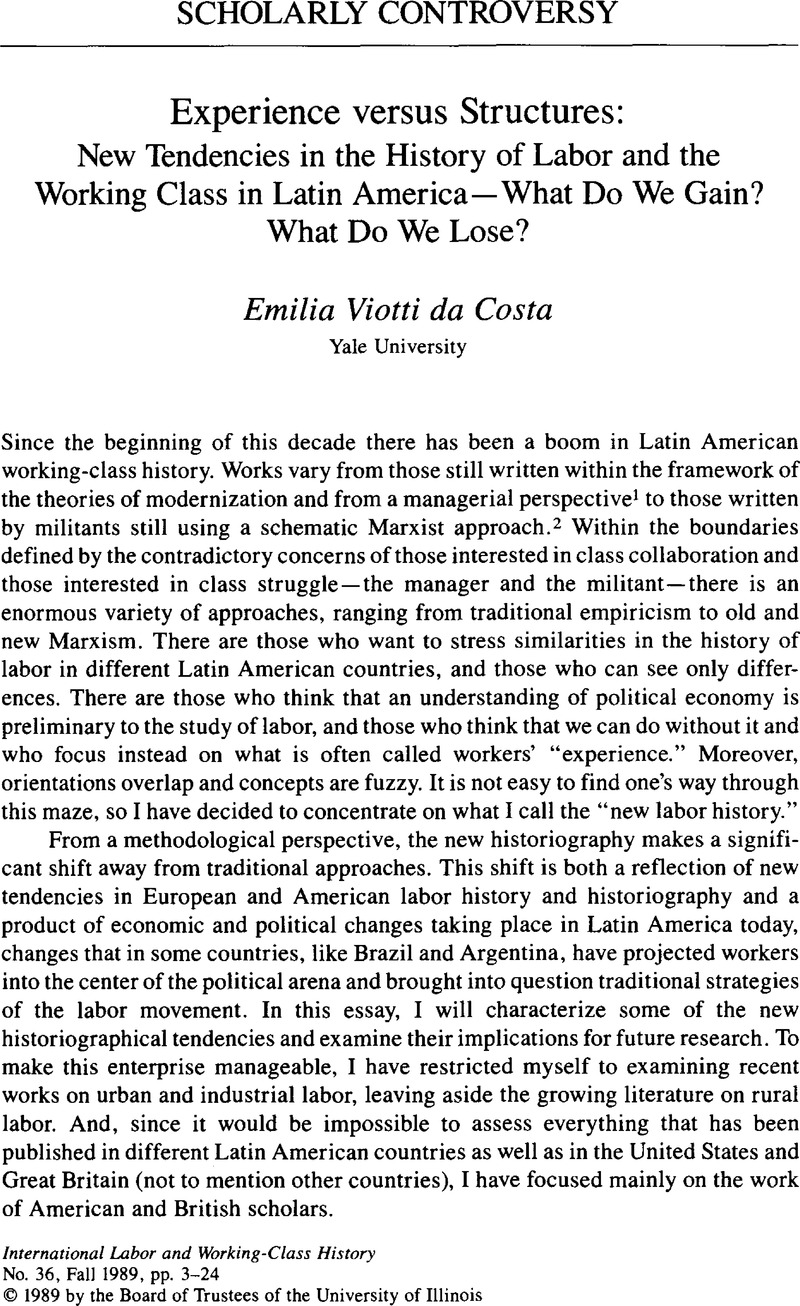Crossref Citations
This article has been cited by the following publications. This list is generated based on data provided by Crossref.
Arnesen, Eric
1990.
Crusades Against Crisis.
International Review of Social History,
Vol. 35,
Issue. 1,
p.
106.
Kearns, Gerry
1992.
Historical geography.
Progress in Human Geography,
Vol. 16,
Issue. 3,
p.
406.
Adelman, Jeremy
1998.
Political Ruptures and Organized Labor: Argentina, Brazil, and Mexico, 1916–1922.
International Labor and Working-Class History,
Vol. 54,
Issue. ,
p.
103.
Williams, Heather
and
Sanders, Nichole
2001.
Book Review: Gender as a Category of Analysis.
Latin American Perspectives,
Vol. 28,
Issue. 6,
p.
79.
Putnam, Lara
2003.
Gender and political economy: Recent work in Latin American labour history.
Social History,
Vol. 28,
Issue. 1,
p.
88.
French, John D.
and
Fortes, Alexandre
2012.
When the Plumber(s) Come to Fix a Country: Doing Labor History in Brazil.
International Labor and Working-Class History,
Vol. 82,
Issue. ,
p.
117.
Curless, Gareth
2016.
Introduction: trade unions in the global south from imperialism to the present day.
Labor History,
Vol. 57,
Issue. 1,
p.
1.
Scodeller, Gabriela
2017.
Latin American ‘free-trade unionism’ and the cold War: an analysis based on educational policies.
Labor History,
Vol. 58,
Issue. 3,
p.
327.
Laveaga, Gabriela Soto
2023.
Worker Once Known: Thinking with Disposable, Discarded, Mislabeled, and Precariously Employed Laborers in History of Science.
Isis,
Vol. 114,
Issue. 4,
p.
834.





